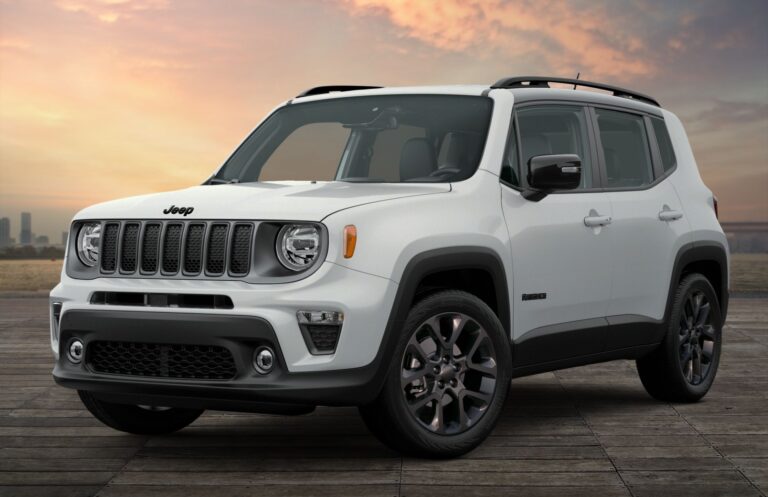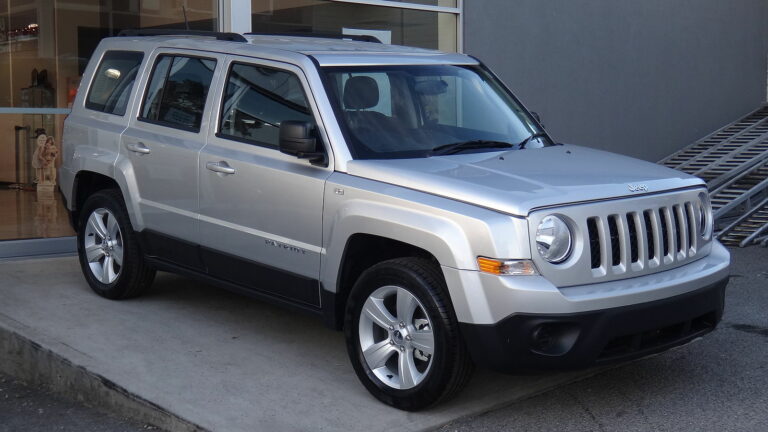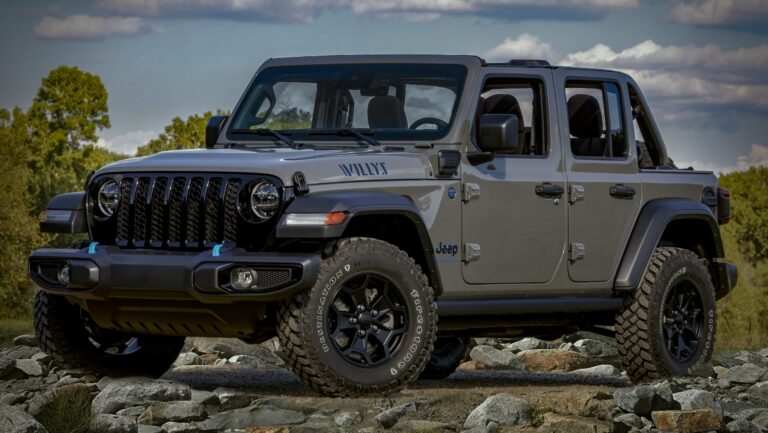Jeep Cherokee 1997 Value: Unpacking the Worth of an Automotive Icon
Jeep Cherokee 1997 Value: Unpacking the Worth of an Automotive Icon jeeps.truckstrend.com
Introduction: Defining the Enduring Allure of the 1997 Jeep Cherokee
When we talk about the "Jeep Cherokee 1997 Value," we’re not just discussing a simple monetary figure; we’re delving into a multifaceted appraisal of a true automotive legend. The 1997 Jeep Cherokee, part of the beloved XJ generation, holds a unique and increasingly significant position in the automotive landscape. It represents a confluence of rugged capability, simple mechanical design, iconic aesthetics, and an undeniable cult following. For many, its value transcends mere utility, embodying a spirit of adventure, reliability, and an approachable entry point into the world of off-roading and classic vehicle ownership.
Jeep Cherokee 1997 Value: Unpacking the Worth of an Automotive Icon
In an era dominated by complex electronics and increasingly homogenized designs, the 1997 Cherokee stands out as a testament to straightforward engineering and purposeful design. Its importance and relevance today stem from its unwavering reliability (when properly maintained), its surprising off-road prowess in stock form, and its highly customizable nature. For enthusiasts, collectors, and practical drivers alike, understanding the true value of a 1997 Jeep Cherokee involves assessing not only its current market price but also its inherent strengths, potential challenges, and its enduring appeal as a piece of automotive history. This comprehensive guide aims to unpack all aspects of the 1997 Jeep Cherokee’s value, offering insights for potential buyers, current owners, and curious enthusiasts.
The Enduring Appeal of the XJ Cherokee: A Timeless Design Meets Robust Engineering
The Jeep Cherokee XJ, produced from 1984 to 2001, is often lauded as one of the greatest SUV designs of all time. The 1997 model year holds particular significance as it marked a substantial refresh for the interior and exterior, while retaining the XJ’s legendary mechanical underpinnings. This "facelift" included a redesigned dashboard, updated door panels, new headlights, and a revised tailgate, making it arguably the most refined version of the classic body style.
What truly underpins the XJ’s enduring appeal, and consequently its value, is its core engineering. Its unibody construction, a rarity for SUVs of its era, offered a lighter, more rigid chassis that contributed to surprisingly nimble handling both on and off-road. The vehicle’s simplicity means fewer complex systems to fail, and its robust components are renowned for their longevity.
Key attributes contributing to its iconic status include:
- Rugged Reliability: Especially the venerable 4.0-liter inline-six (I6) engine, known for its bulletproof durability and impressive torque.
- Simple Mechanics: Easy to work on, making it a favorite for DIY enthusiasts and reducing labor costs for professional repairs.
- Iconic Design: A timeless, boxy aesthetic that has aged gracefully and stands out from modern crossover designs.
- Off-Road Prowess: Despite its relatively compact size, the XJ’s excellent approach/departure angles, solid axles, and capable 4WD systems (Command-Trac and Selec-Trac) make it incredibly competent off-road.
- Vast Aftermarket Support: A huge community and an extensive range of aftermarket parts exist, allowing for endless customization and easy repair.
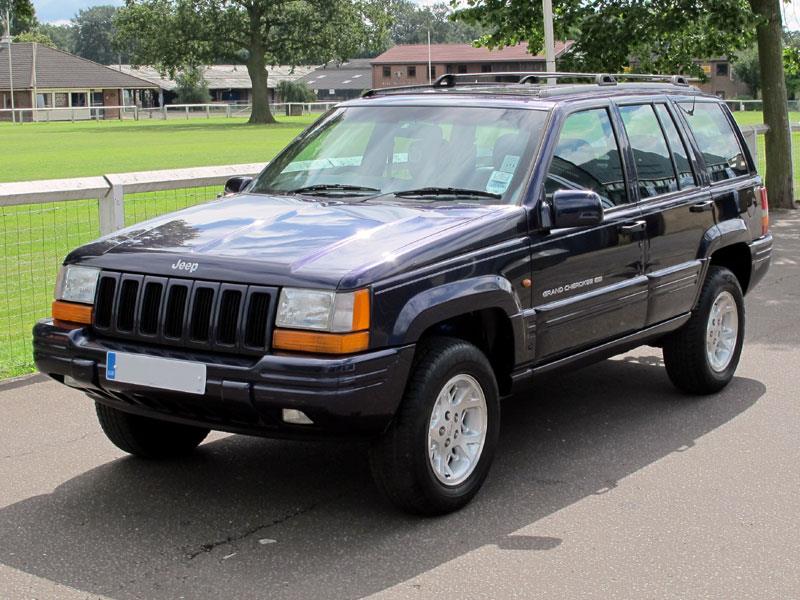
These factors combine to create a vehicle that offers immense utility, a strong sense of character, and a growing appreciation in the collector market.
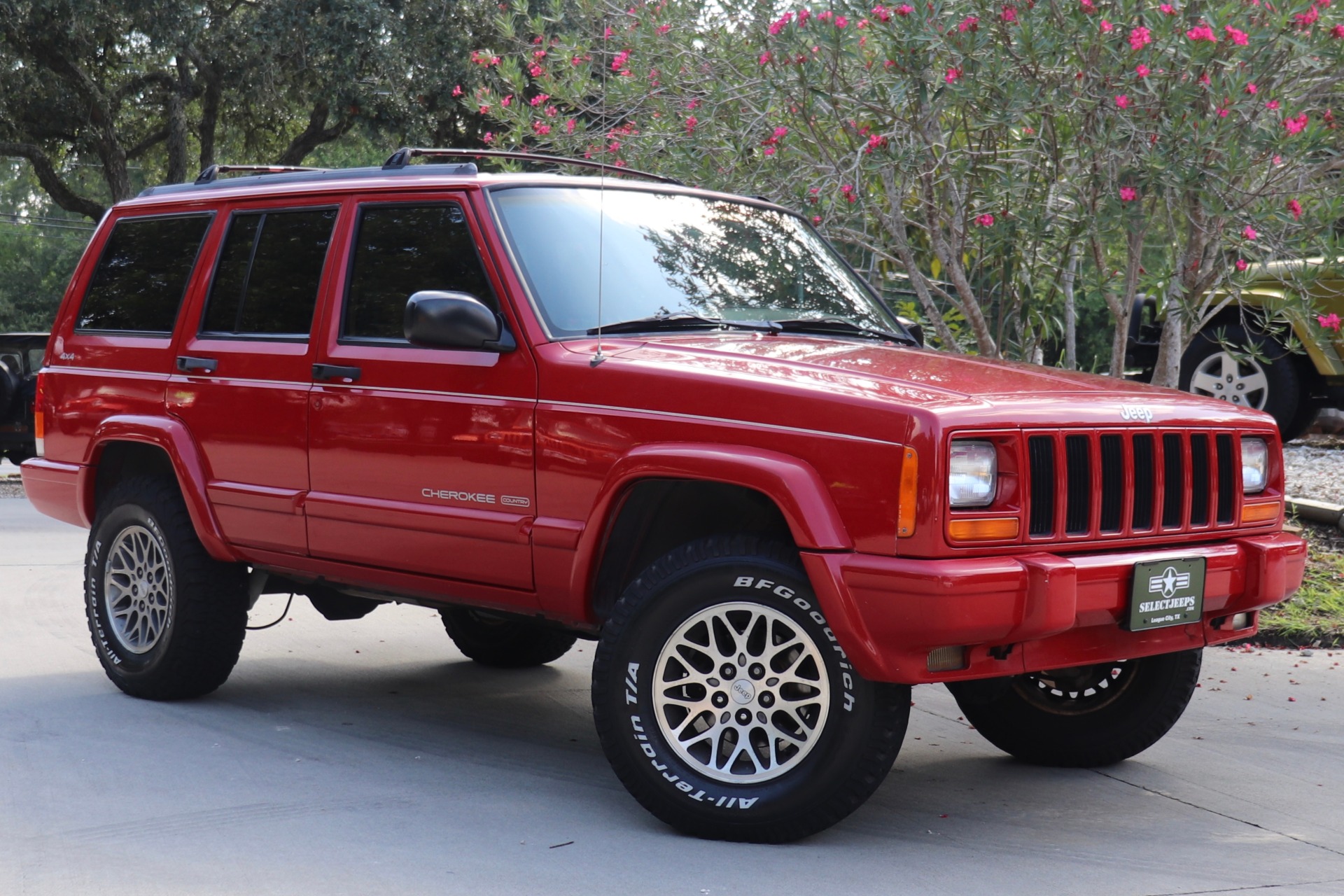
Factors Influencing 1997 Jeep Cherokee Value: A Detailed Breakdown
The market value of a 1997 Jeep Cherokee can vary wildly, from a few hundred dollars for a beat-up parts donor to well over $15,000 for a pristine, low-mileage example. Several critical factors dictate where a specific vehicle falls within this spectrum:
1. Condition: The Primary Determinant
- Body Rust: The single biggest killer of XJ value. Check rocker panels, floorboards, frame rails, unibody pinch welds, and door bottoms. Minimal or surface rust is manageable; extensive perforation drastically reduces value.
- Frame Integrity: Crucial for safety and longevity. Look for bends, cracks, or serious rust on the unibody rails.
- Interior Wear: Dash cracks (common), torn seats, worn carpets, and malfunctioning electronics (windows, HVAC) all detract from value. A clean, intact interior significantly boosts appeal.
- Mechanical Health: Engine condition (no knocking, good oil pressure, no overheating), transmission shifting smoothly, functional 4WD system, healthy suspension components, and operational brakes are paramount. A pre-purchase inspection (PPI) is highly recommended.

2. Mileage: A Double-Edged Sword
While lower mileage generally correlates with higher value, the 4.0L I6 engine is known to run for 200,000, 300,000, or even 400,000+ miles with proper maintenance. A high-mileage XJ with meticulous maintenance records can be more valuable than a lower-mileage one that has been neglected.
3. Trim Level & Options: Desirability Dictates Price
- Engine: The 4.0L I6 is overwhelmingly preferred over the rarer 2.5L I4 due to its power, torque, and legendary reliability.
- Drivetrain: 4-wheel drive (4WD) models command significantly higher prices than 2-wheel drive (2WD) variants, especially those equipped with the Selec-Trac (NP242) full-time 4WD system or the more robust Command-Trac (NP231) part-time system.
- Trim Levels:
- Sport: Often the most common, offering a balance of features and affordability.
- Country/Limited: Higher-end trims with more creature comforts like leather seats, power options, and unique exterior trim. These can fetch higher prices if well-preserved.
- Transmission: Both manual and automatic transmissions were offered. While automatics are more common, a well-preserved manual transmission model can be highly desirable to enthusiasts.
4. Maintenance History: Proof of Care
Comprehensive service records indicating regular oil changes, fluid flushes, and timely repairs add immense value. It demonstrates responsible ownership and provides a clear picture of the vehicle’s health.
5. Modifications: A Subjective Addition
Quality, tasteful modifications (e.g., professional lift kit, quality tires, functional bumpers) can add value for the right buyer. However, poorly installed or extreme modifications can deter buyers and reduce value. Stock or mildly modified examples often hold the broadest appeal.
6. Geographic Location: Rust Belt vs. Dry Climates
Vehicles from dry, warm climates (e.g., Southwest US) are less likely to suffer from severe rust issues and generally command higher prices than those from rust-prone regions.
Understanding Market Trends and Pricing for the 1997 Jeep Cherokee
The market for classic and enthusiast vehicles is dynamic, and the 1997 Jeep Cherokee is no exception. For many years, XJs were abundant and inexpensive. However, as they age and fewer clean examples remain, their value has been steadily increasing, particularly for well-preserved, low-mileage, or factory-original examples.
Where to Look for Pricing:
- Kelley Blue Book (KBB) & NADAguides: These provide a general baseline, but often undervalue enthusiast vehicles like the XJ, especially in excellent condition. Use them as a starting point, not the definitive word.
- Online Marketplaces: Facebook Marketplace, Craigslist, and eBay Motors are excellent for gauging local market prices.
- Specialty Auction Sites: Bring a Trailer and Cars & Bids have seen some remarkably high sales for exceptional XJ Cherokees, setting new benchmarks for pristine examples.
- Enthusiast Forums & Clubs: Jeep forums (e.g., CherokeeForum.com, NAXJA.org) and local Jeep clubs often have classified sections where knowledgeable buyers and sellers interact, giving a more accurate sense of enthusiast-driven pricing.
The "Enthusiast Tax":
This phenomenon explains why certain vehicles, despite their age, command premium prices. For the 1997 Cherokee, a well-documented, rust-free, mechanically sound, and aesthetically pleasing example can fetch significantly more than its average KBB value. This premium is paid by buyers who appreciate the XJ’s unique attributes and are willing to invest in a top-tier example that requires less immediate work.
The Cost of Ownership Beyond Purchase Price
While the initial purchase price of a 1997 Jeep Cherokee can be quite affordable, it’s crucial to consider the ongoing costs of ownership to truly assess its long-term value.
Maintenance & Repairs:
- Common XJ Issues: Be prepared for common problems like cooling system weaknesses (radiator, water pump), power steering leaks, oil pan/rear main seal leaks, rust, and occasional electrical gremlins (power windows, dashboard lights).
- Affordability of Parts: A major benefit is the sheer abundance and affordability of replacement parts, both OEM and aftermarket. This keeps repair costs relatively low compared to more modern or exotic vehicles.
- Ease of DIY: Many common repairs are straightforward for someone with basic mechanical skills, further reducing labor costs.
- Preventative Maintenance: Regular fluid changes, belt/hose inspections, and addressing small issues before they become big ones are critical for maximizing the XJ’s lifespan and value.
Fuel Economy:
The 4.0L I6, while robust, is not known for its fuel efficiency. Expect around 15-18 MPG combined in stock form, which can drop significantly with larger tires, lift kits, and heavy modifications. This is an ongoing cost to factor in.
Insurance:
Generally, insurance for an older vehicle like the 1997 Cherokee is quite reasonable, especially if it’s not considered a primary vehicle. However, rates vary based on location, driver history, and coverage levels.
Modifications:
The XJ’s modifiability is a huge draw, but it’s a slippery slope. Lift kits, larger tires, bumpers, winches, and lockers can add up quickly. While these enhance capability and appeal for some, they are investments that often don’t fully recoup their cost upon resale.
Buying and Selling a 1997 Jeep Cherokee: Practical Advice
For Buyers:
- Do Your Homework: Understand common XJ issues and know what to look for.
- Inspect for Rust Thoroughly: This is paramount. Bring a flashlight and get underneath the vehicle.
- Get a Pre-Purchase Inspection (PPI): If you’re not mechanically inclined, pay a trusted mechanic (ideally one familiar with Jeeps) to inspect the vehicle.
- Test Drive Extensively: Listen for strange noises, feel for vibrations, test 4WD, and check all electrical components.
- Review Maintenance Records: Ask for any and all service history.
- Set a Realistic Budget: Factor in potential immediate repairs and ongoing maintenance. Don’t buy the cheapest one you find unless you’re prepared for significant work.
- Consider Your Use Case: Are you building an off-roader, a daily driver, or a weekend cruiser? This will influence what kind of XJ you should seek.
For Sellers:
- Be Honest and Transparent: Disclose all known issues, even minor ones. This builds trust and avoids problems later.
- Detail Thoroughly: A clean, well-presented vehicle always sells faster and for more money.
- Take High-Quality Photos: Show the exterior from all angles, interior (especially dashboard and seats), engine bay, and undercarriage (especially if it’s rust-free).
- Highlight Maintenance: Provide detailed service records. If you’ve addressed common XJ issues (e.g., cooling system overhaul), emphasize this.
- Price Strategically: Research comparable sales in your area and online. Be realistic but also understand the "enthusiast tax" if your XJ is exceptional.
- Emphasize Unique Features: If it has desirable options (e.g., Selec-Trac, specific trim features, quality modifications), point them out.
The XJ’s Legacy and Future Value
The 1997 Jeep Cherokee is more than just a used SUV; it’s rapidly transitioning into a modern classic. Its practical utility, coupled with its rugged charm and increasing scarcity of clean examples, suggests that its value will continue to appreciate for well-maintained, original, or tastefully modified vehicles.
The vibrant global community of XJ enthusiasts ensures a continuous supply of knowledge, parts, and support, further cementing its long-term viability. As newer vehicles become more complex and less repairable by the average owner, the simple, robust XJ becomes even more appealing. For many, its value lies not just in its resale price, but in the experiences it enables – from conquering challenging trails to simply enjoying the open road in a vehicle with character and soul. The 1997 Jeep Cherokee isn’t just holding its value; for the right examples, it’s gaining it, promising a rewarding ownership experience both now and into the future.
1997 Jeep Cherokee Estimated Market Value Table
Please note: These values are estimates and can vary significantly based on geographic location, specific options, maintenance history, and market demand. "Excellent" condition implies a well-maintained, rust-free, mechanically sound vehicle with minimal cosmetic flaws, potentially with low mileage. "Poor" condition implies significant mechanical issues, rust, or major cosmetic damage, likely suitable for parts or a complete restoration.
| Trim Level | Drivetrain | Condition: Poor | Condition: Fair | Condition: Good | Condition: Excellent |
|---|---|---|---|---|---|
| Sport (4.0L I6) | 2WD | $500 – $1,500 | $1,500 – $3,000 | $3,000 – $5,000 | $5,000 – $8,000 |
| Sport (4.0L I6) | 4WD | $1,000 – $2,000 | $2,500 – $4,500 | $4,500 – $7,500 | $7,500 – $12,000+ |
| Country (4.0L I6) | 2WD | $700 – $1,700 | $1,700 – $3,500 | $3,500 – $5,500 | $5,500 – $9,000 |
| Country (4.0L I6) | 4WD | $1,200 – $2,500 | $3,000 – $5,000 | $5,000 – $8,500 | $8,500 – $14,000+ |
| Limited (4.0L I6) | 2WD | $800 – $1,800 | $1,800 – $3,800 | $3,800 – $6,000 | $6,000 – $9,500 |
| Limited (4.0L I6) | 4WD | $1,500 – $2,800 | $3,500 – $5,500 | $5,500 – $9,000 | $9,000 – $15,000+ |
| 2.5L I4 Models | (Both) | Subtract 20-30% from 4.0L I6 values in comparable condition. | |||
| Manual Trans | (Both) | Add 10-20% for desirable examples in good to excellent condition. |
Disclaimer: These are general estimates. Exceptionally rare, low-mileage, or concours-level examples (especially 4WD 4.0L models) can occasionally sell for significantly more than the "Excellent" range, particularly at specialized auctions. Conversely, vehicles with significant undocumented issues or accident history will fall below these ranges.
Frequently Asked Questions (FAQ) about the 1997 Jeep Cherokee Value
Q1: Is the 1997 Jeep Cherokee a reliable vehicle?
A1: Yes, especially models equipped with the 4.0-liter inline-six engine. With proper and consistent maintenance, they are renowned for their longevity and reliability. Many examples regularly exceed 200,000-300,000 miles.
Q2: What are the most common problems to look out for in a 1997 Jeep Cherokee?
A2: Common issues include cooling system problems (water pump, radiator, thermostat), power steering leaks, rear main seal oil leaks, rust on the unibody and rocker panels, and occasional electrical issues (power windows, dashboard lights). None are typically show-stoppers but should be checked during a pre-purchase inspection.
Q3: Which engine is best for the 1997 Cherokee, and does it affect value?
A3: The 4.0-liter inline-six (I6) engine is by far the most desirable due to its robust nature, strong torque, and legendary reliability. It significantly enhances the vehicle’s value compared to the less common and less powerful 2.5-liter inline-four (I4) engine.
Q4: Is the 1997 Jeep Cherokee good for off-roading?
A4: Absolutely. Even in stock form, the XJ Cherokee is highly capable off-road due to its solid axles, good ground clearance, and effective 4WD systems. Its relatively compact size also makes it maneuverable on trails. It’s a popular choice for modifications to further enhance off-road performance.
Q5: Will the value of the 1997 Jeep Cherokee go up in the future?
A5: For well-maintained, rust-free, and original or tastefully modified examples, the value is likely to continue appreciating. As fewer clean examples remain, and its status as a classic continues to grow, demand from enthusiasts will drive prices up for the best vehicles. Average or neglected examples will likely remain low in value.
Q6: How much does it cost to insure a 1997 Jeep Cherokee?
A6: Insurance costs vary widely based on location, driver’s age, driving record, and chosen coverage. However, generally, insurance for an older vehicle like the 1997 Cherokee is quite affordable compared to newer vehicles, especially if it’s not the primary vehicle on a policy.
Q7: Should I buy a high-mileage 1997 Cherokee?
A7: A high-mileage 1997 Cherokee (especially with the 4.0L engine) can be a good value, provided it comes with comprehensive maintenance records. A well-maintained 200,000-mile XJ is often a better buy than a neglected 100,000-mile one. Focus on condition and maintenance history over just mileage.
Conclusion: The Enduring Worth of a True Classic
The "Jeep Cherokee 1997 Value" is a dynamic concept, stretching far beyond mere dollars and cents. It encompasses the vehicle’s inherent reliability, its iconic design, its formidable off-road capabilities, and its unique position as an increasingly sought-after modern classic. For potential buyers, understanding this multifaceted value means looking beyond the initial asking price to consider the vehicle’s condition, maintenance history, and the potential for future enjoyment and even appreciation.
For current owners, recognizing this value means appreciating the legacy they possess and understanding the importance of proper care to preserve its worth. The 1997 Jeep Cherokee, particularly those equipped with the legendary 4.0L I6 and 4WD, stands as a testament to practical, robust engineering. It offers an unparalleled blend of utility, character, and an approachable entry into the world of classic vehicle ownership and off-road adventure. As time marches on, the enduring appeal and growing scarcity of clean XJ Cherokees will only solidify their place as a cherished and valuable piece of automotive history.

